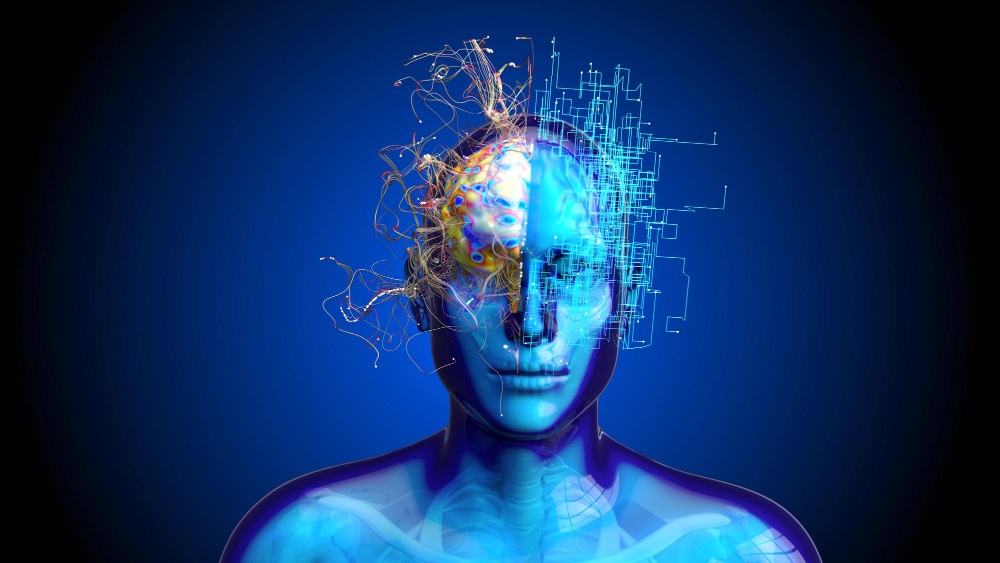Artificial intelligence has advanced from rule-based automation toward systems capable of reasoning about complex tasks. In software quality validation, this transition is reshaping end-to-end pipelines.
Incorporating AI E2E testing into validation frameworks enables flexible error identification, contextual understanding, and robust execution paths that surpass mere scripted directives. Rather than carrying out set commands, intelligent agents replicate the judgment process of seasoned testers, maneuvering through test environments with contextual understanding.
Why Traditional Automation Reaches Its Limits
Traditional scripted test suites function well for repetitive execution but fail when confronted with dynamically evolving application states. They assume deterministic flows, but modern distributed applications introduce variability across environments, states, and interaction pathways. Rigid automation often produces false negatives or misses emergent conditions that testers easily detect by applying contextual reasoning.
Key limitations include:
- Static assumptions: Fixed scripts cannot adapt to changes in user interface structures or asynchronous events.
- Shallow validation: Traditional tools only confirm expected outputs, lacking the ability to explore deviations or borderline cases.
- Scalability bottlenecks: As applications expand, maintaining scripts becomes resource-intensive and fragile.
- Limited abstraction: Complex behavior models like concurrency, reinforcement-based state changes, and random inputs continue to be challenging to reproduce in deterministic automation.
These limitations necessitate an intelligent layer that comprehends, modifies, and learns, instead of simply performing.
Principles of AI QA Agents
Designing AI agents for validation requires embedding principles that replicate the strategies human testers employ when approaching unknown or partially defined systems. The goal is not only to detect errors but also to model reasoning patterns that approximate expert judgment.
Context Awareness
Agents need mechanisms to map application states dynamically. Such mapping involves perception models that monitor UI layouts, data flows, and state transitions. Natural language understanding can augment the process by interpreting logs, API responses, or even documentation to refine contextual mapping.
Exploration and Hypothesis Testing
Human testers hypothesize possible failure points and then attempt to verify them. AI agents require exploration strategies driven by reinforcement learning, curiosity-based sampling, or uncertainty estimation. These methods enable the discovery of hidden edge cases beyond scripted scenarios.
Adaptive Learning
Test environments evolve with frequent releases. Agents must learn continuously through feedback loops, updating models to reflect new behaviors. Transfer learning and incremental retraining enable sustained accuracy without full retraining cycles.
Error Prioritization
A significant aspect of human testing is evaluating which failures matter most. AI agents should integrate prioritization strategies using metrics such as critical path relevance, user impact scoring, or fault propagation potential.
Core Architectures for AI QA Agents
To operationalize these principles, architectures must combine multiple AI paradigms into coherent pipelines:
- Reinforcement Learning (RL): RL agents improve your testing exploration approach through long-term reward signal-based decision making focused on expansion of coverage and error discovery.
- Natural Language Processing (NLP): NLP allows interpretation of requirements, documentation, and logs to direct tests aligning to specifications.
- Computer Vision: For UI-heavy applications, visual recognition ensures resilience against structural changes, enabling validation even when DOM hierarchies shift.
- Graph Neural Networks (GNNs): Application flows represented as graphs can be navigated through GNNs, enabling path prediction and dependency analysis.
- Hybrid Symbolic-Neural Systems: Combining rule-based symbolic reasoning with deep learning ensures that deterministic conditions and probabilistic reasoning coexist.
These architectures must be containerized and integrated into CI/CD pipelines for scalable execution.
Building an AI Agent for QA Testing
A systematic workflow is required when building an AI agent for QA testing, ensuring alignment with technical constraints while maintaining adaptability. The process begins by defining scope and metrics, establishing clear validation targets such as functional correctness, performance thresholds, or resilience under stress. Metrics such as path coverage, average detection time, and false positive rates offer quantifiable measures of efficiency.
After setting objectives, the following step is to gather and preprocess data. That step involves the collection of logs, traces of execution, old bug reports, and prior test results. Data must then be de-identified, de-duplicated, and normalized to create a reliable starting point for training the model.
With datasets prepared, model selection and training become the core focus. Reinforcement learning models are typically used for exploration, sequence models for log prediction, and vision models for user interface recognition. Training necessitates having access to simulated environments where agents can refine and adjust without compromising production stability.
These settings are typically established through containers, virtual machines, or cloud systems to ensure replicability. In these configurations, stress factors, latency insertion, and simultaneous requests can be implemented to reflect real-world fluctuations.
The integration of agents into CI/CD pipelines ensures that validation runs automatically during each release cycle. Such integration allows agents to generate detailed reports and, if necessary, trigger rollback mechanisms when critical regressions are identified.
After deployment, ongoing surveillance and feedback systems become crucial. Monitoring guarantees the performance of the model remains consistent over time, while feedback loops supply data for retraining and adjustment, allowing the agent to respond to changing application behavior.
Practical Example: Adaptive Login Validation
Consider a login flow frequently modified with additional fields, asynchronous calls, or multi-factor requirements. Script-based automation often fails as the DOM structure changes. An AI agent instead detects login-related components through semantic and visual cues, hypothesizes valid sequences, and verifies response patterns. If a new multi-factor prompt appears, the agent adapts by exploring recovery flows and logging contextual deviations.
Such behavior illustrates the capacity of AI-driven validation to adaptively respond where static scripts collapse.
Infrastructure Considerations
Building AI QA agents requires significant infrastructure support:
- Scalable Compute: Model training, particularly for RL and vision models, demands GPU acceleration and distributed compute.
- Data Pipelines: Continuous collection of logs and execution traces must be automated for retraining cycles.
- Version Control for Models: Similar to code, AI models need version control to ensure reproducible results.
- Security: Any sensitive datasets must be masked or anonymized to be integrated into pipelines.
- Observability: Dashboards and metrics reporting systems give visibility into performance and accuracy.
Enhancing Reliability with GenAI Native Test Agents
LambdaTest KaneAI is a Generative AI testing tool designed to simplify and accelerate end-to-end testing. Built on advanced Large Language Models (LLMs), KaneAI allows teams to create, plan, and manage tests using natural language, removing the need for complex scripting. It can generate test cases for web and mobile applications, including native Android and iOS apps, and integrates with LambdaTest’s HyperExecute for fast, parallel test execution.
KaneAI also supports intelligent test generation, multi-language code export, and sophisticated test planning, making it easier for teams of all sizes to implement automated testing. By democratizing AI-native test automation, KaneAI reduces manual effort, improves test coverage, and helps deliver higher-quality, more reliable software faster.
Key Features:
- Natural Language Test Authoring: Create and evolve complex test cases using plain language, eliminating the need for traditional scripting.
- Multi-Language Code Export: Convert automated tests across all major languages and frameworks, facilitating seamless integration into existing test suites.
- Intelligent Test Planner: Automatically generate and automate test steps based on high-level objectives, ensuring comprehensive test coverage.
- Visual Test Creation: Integrate with SmartUI to set visual checkpoints using natural language commands, enabling visual testing without complex scripting.
- Automatic Retry on Failures: Configure tests to automatically retry on failures, reducing flaky test results and enhancing CI/CD pipeline stability.
- Mobile Browser Testing: Author mobile browser tests in plain language, expanding test coverage across devices and platforms.
- HAR Logs and Timezone Support: Include full HAR logs and customizable time zones in test runs for detailed network activity analysis and global user simulation.
Challenges in Deployment
Despite advantages, deploying AI QA agents introduces challenges:
- Data Scarcity: Some systems lack sufficient labeled datasets for model training.
- Exploration Risks: RL-driven exploration can cause destructive actions in production environments if not carefully sandboxed.
- False Prioritization: Overfitting models may highlight minor failures while missing critical path regressions.
- Resource Overhead: Continuous retraining and execution require optimized pipelines to balance cost and efficiency.
- Integration Complexity: Legacy systems and closed environments may resist seamless integration with agent-driven workflows.
Mitigating these requires architectural foresight and modular integration strategies.
Extending AI QA Agents to Multi-Modal Testing
An emerging direction is the expansion of agents into multi-modal validation, where inputs extend beyond interface interactions. Many applications integrate audio commands, gesture recognition, and streaming data. For such systems, an AI QA agent must incorporate models capable of interpreting voice commands, validating acoustic responses, and analyzing temporal data streams. Such integration requires the fusion of modalities such as speech recognition, natural language understanding, and time-series prediction into the validation framework. By combining these channels, agents can test real-world conditions where multiple signals influence application state simultaneously.
For example, validating an application that responds to both a spoken command and a concurrent gesture requires an agent that models synchronization of sensory inputs, verifies state alignment, and predicts potential breakdowns in multi-modal coordination. Such expansion increases coverage and also ensures that validation frameworks remain relevant as interfaces evolve toward natural interaction paradigms. As systems increasingly incorporate edge devices and IoT integration, the capacity to validate heterogeneous input signals will determine the robustness of future pipelines.
Future Directions
The trajectory of AI-driven validation suggests significant advancements in how agents will operate in the coming years. One anticipated development is the rise of self-healing pipelines, where agents autonomously patch failing scripts and reconfigure test paths to maintain stability. Another is the use of collaborative agents, with multiple specialized entities focusing on areas such as UI, API, and performance, then interacting to provide a holistic validation process. Explainability is also expected to become a priority, with transparent reasoning models, ensuring that reports and detected failures can be interpreted effectively by engineers.
In addition, autonomous regression identification will be essential, as systems advance to automatically trace regressions to particular code commits and even suggest corrective measures. Ultimately, the incorporation of generative AI is set to enhance coverage by actively suggesting new test cases and recognizing possible failure points that static or pre-written methods might overlook.
Together, these directions highlight a path toward intelligent, adaptive, and increasingly autonomous quality validation frameworks.
Conclusion
AI-powered validation is moving from the realm of theory and into the realm of practice for how applications can be tested at scale. Mirroring principles of contextual awareness, exploration, adaptive learning, and prioritization, AI E2E testing is becoming an integral part of resilient pipelines across architectures like reinforcement learning, computer vision, and symbolic reasoning. Building an AI agent for QA testing requires thoughtful agent design, integration with infrastructure, and ongoing monitoring; the benefits are agents that think and adapt like seasoned testers and afford reliability in environments that are more complicated than a static script.










